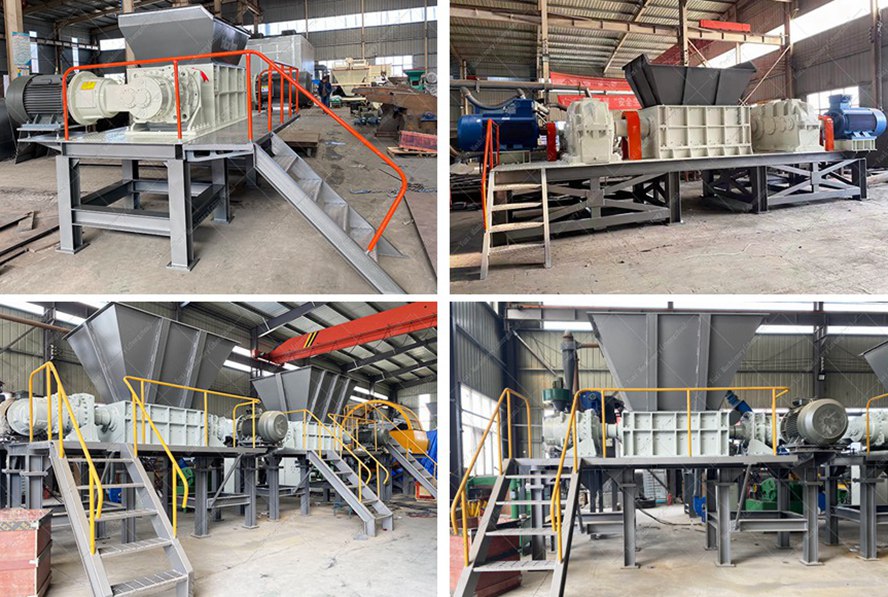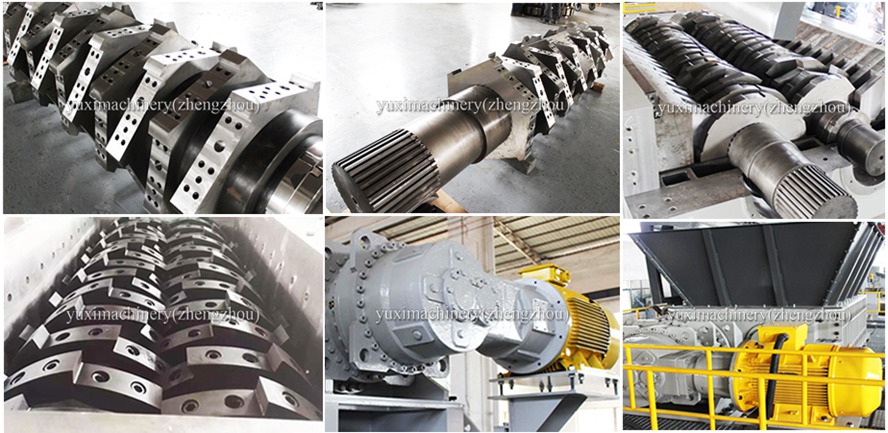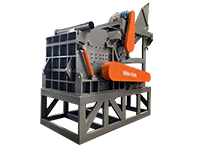I. Real Challenges and Industry Cases in Can Crushing
Last year, we were involved in a production line optimization project for a food processing plant. The piles of metal can waste in the workshop gave the factory manager a headache—traditional crushers were not only noisy but also inefficient due to poorly designed blades, causing frequent blockages. Clearing these blockages required a 2-hour shutdown each time, directly impacting production capacity.
Case Study: A canned fruit and vegetable company incurred an additional labor cost of $5,000 per month due to improper equipment selection. After switching to a professional can crusher, crushing efficiency increased by 40%, energy consumption decreased by 22%, and the equipment cost was recovered within six months.
II. Core Principles and Technical Details of Can Crushers
1. Crushing Process and Mechanical Structure
• Pre-crushing Stage: Uses toothed rollers for rough crushing to flatten and tear open cans, releasing residual liquids.
• Main Crushing Stage: Employs a combination of "V-shaped teeth + stepped cutter heads" to achieve particle size control of 5–10 mm.
• Separation System: Integrates magnetic separation and eddy current sorting for efficient separation of metals and non-metals.
2. Key Performance Indicators
• Capacity Matching: Select models based on raw material moisture content (wet materials ≤3 t/h, dry materials up to 8 t/h).
• Tool Life: Tungsten carbide blades with a lifespan of ≥2,000 hours when processing steel cans.
• Energy Consumption Control: Variable frequency motors + hydraulic drives, with no-load current ≤30% of rated value.

III. Five-Step Scientific Selection Method
1. Assess Material Properties
• Material: Different tool angles are needed for tinplate, aluminum cans, and composite materials.
• Form: Flattened cans, whole cans, and liquid-containing cans require different feeding systems.
2. Determine Processing Scale
• Small-Scale Production: Choose vertical single-shaft models with 1–2 t/h capacity.
• Medium-to-Large Production: Prioritize horizontal dual-shaft models with hydraulic push systems.
3. Verify Equipment Qualifications
• Check CE/ISO certifications, focusing on dust explosion protection and noise control indicators.
• Verify if the manufacturer holds pressure vessel design and manufacturing qualifications.
4. Test and Observe Performance
• Initial Test Run: Operate continuously for 4 hours, monitoring current fluctuations (≤±5%).
• Long-Term Tracking: Tool wear rate ≤0.1 mm/day is considered acceptable.
IV. Common Industry Misconceptions and Avoidance Traps
1. The "Universal Crushing" Trap
A company used a general-purpose crusher for aluminum cans, leading to frequent jams due to insufficient feed opening size. Repair costs eventually exceeded the original equipment value.
2. Neglecting Preprocessing
Direct crushing of liquid-containing cans can overload motors. The correct approach: first remove over 90% of free liquid using a dewatering device.
3. Key Equipment Maintenance Details
• Tool Clearance: Check every 8 hours, maintaining 0.5–1.0 mm.
• Bearing Lubrication: Use lithium-based grease; shut down if temperature exceeds 60°C.

V. Frequently Asked Questions
Q1: Can can crushers handle cans with labels?
A: Yes, but choose models with a "label stripping-wind separation" module. Preprocessing with hot alkaline water immersion is recommended.
Q2: How to balance crushing fineness and capacity?
A: Use "two-stage crushing"—coarse crush to 30–50 mm, then fine crush to 5–10 mm, increasing capacity by over 20%.
Q3: How to efficiently sort crushed metal cans?
A: Use a combination of "magnetic separation + eddy current sorting + density wind separation," achieving ≥98% aluminum recovery and ≥99% iron recovery.
Q4: What are the special installation requirements?
A: Equip with a vibration-damping foundation (≥200 mm thick) and a metal detector at the feed inlet to prevent hard foreign objects.

VI. Conclusion: From Pain Points to Solutions
Selecting a can crusher is not just about equipment procurement but a holistic production line optimization. When you integrate crushing, sorting, dust removal, and odor control, you achieve "efficiency, cleanliness, and low cost."
 Shredding Machine
Shredding Machine
 Waste Recycling Line
Waste Recycling Line
 Optional Equipment
Optional Equipment



